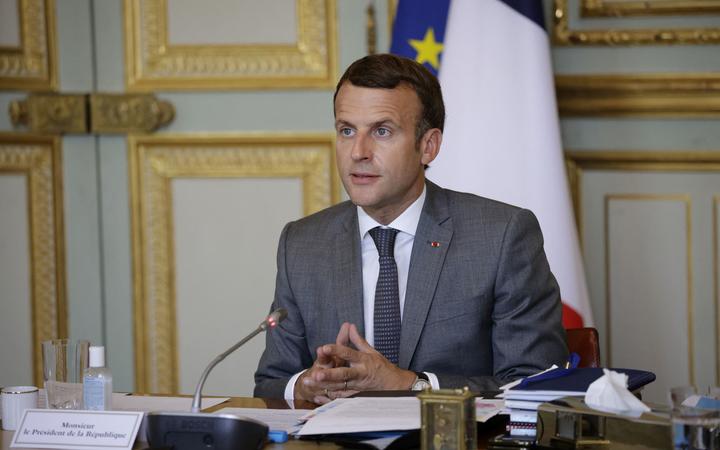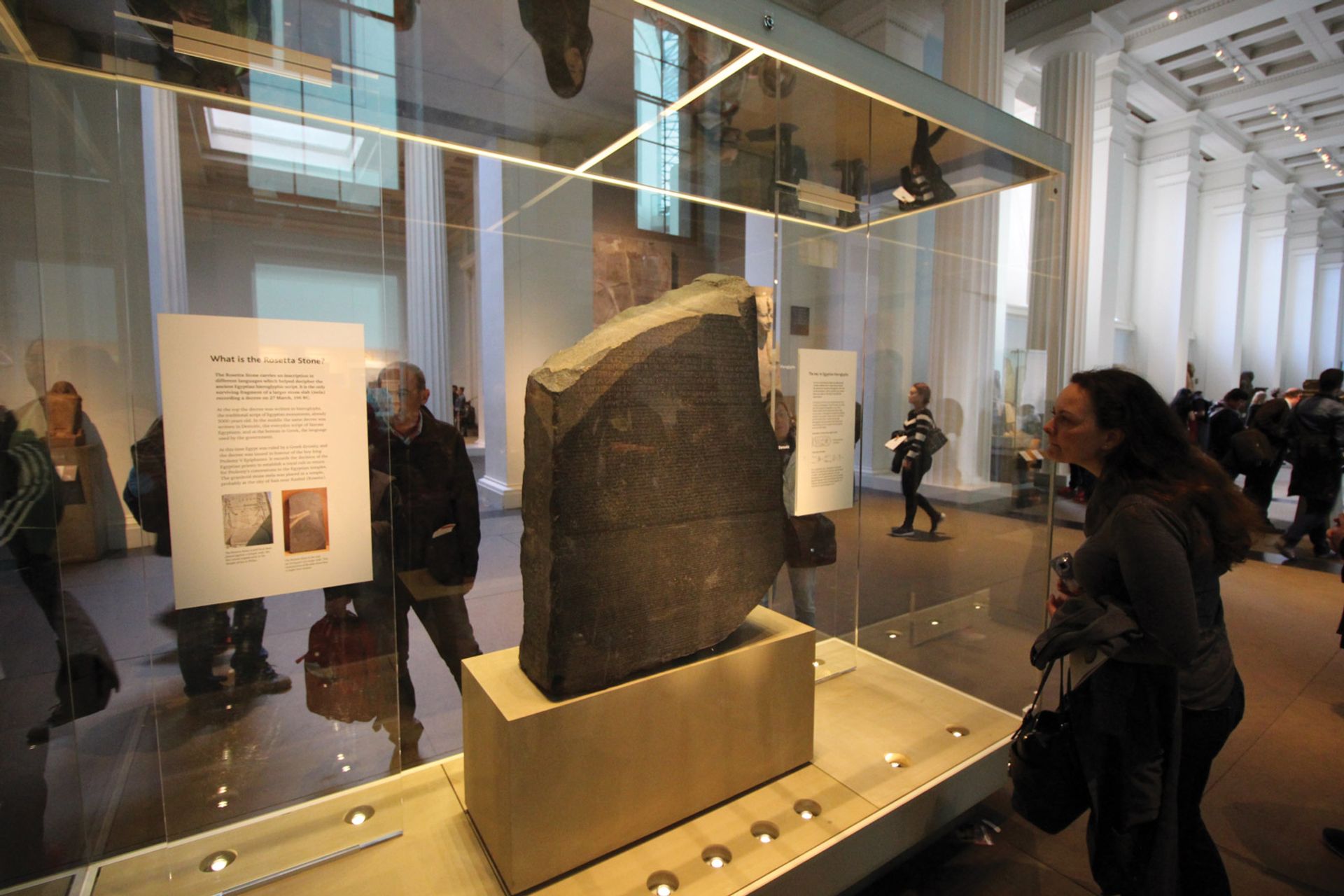get these nets
Veteran
11 Sep 2021
The man snatching Africa's 'stolen' treasures from the museums of Europe
The footage is shaky and grainy. A man dressed all in black is standing defiantly in front of a row of African artefacts on display at one of Paris's most prestigious museums, the Quai Branly.

Mwazulu Diyabanza is on trial for having stolen a Chadian funeral post from a museum, in protest against the monopolization of African cultural property by Western countries. Photo: AFP or licensors
Suddenly, he steps onto the podium and begins to yank an African funerary pole with both hands, struggling to get it loose from its stand. A colleague rushes in to help him and together they pull harder, as another live-streams it all on Facebook.
There's a "clack" as it's wrenched free. "Voila," the man says, before turning and marching through the museum brandishing the object. "I'm taking back to Africa all that was pillaged, all that was stolen, while African blood was being shed," he says.
The man is Mwazulu Diyabanza, an agent provocateur dressed in an African tunic with a Black Panther-style beret atop his head, speaking Molière French in a Congolese baritone.
Like Arsène Lupin, the beloved fictional French cat burglar who steals jewellery from France's most famous establishments to help the needy, his targets are high profile. But instead of gems, Diyabanza is reclaiming cultural objects taken from Africa during colonisation.
"When we walk into a museum, it's the symbol of having taken the object that matters to us," he tells the ABC's Foreign Correspondent. "Because when we carry out this action, we want to tell the whole world the piece has been liberated."
Diyabanza calls this "active diplomacy", although watching the videos it's hard to see the diplomacy. He says it's a form of political protest and that he doesn't intend to steal. Rather it's the museums, which Diyabanza has likened to a "mafia", which he says are in possession of "stolen objects".
A trove of African treasures
Diyabanza's actions might seem radical, but they come from a deep frustration with the French state, which historically has exploited Africa's natural and cultural resources.
France once ruled large swathes of Africa, from Algeria in the north to the French Congo in the centre west, and during that time the French brought back tens of thousands of culturally significant objects. Today, those objects are on display in many of France's museums.
For decades it was something of a taboo subject in France. But in 2017, the issue of cultural heritage became a national talking point when the newly-elected president Emmanuel Macron - the first president to be born after France's colonial period - dropped la politesse, or politeness, promising to improve Franco-African relationships by committing to restitution.
"I cannot accept that a large part of the cultural heritage from several African countries is in France," Macron told an audience of students in West Africa at the time. "African heritage can't only be in private collections and European museums. African heritage must be showcased in Paris but also in Dakar, Lagos and Cotonou."
Macron commissioned a report, released in 2018, which found an astonishing 90 to 95 per cent of sub-Saharan Africa's cultural heritage was held by museums outside of Africa. France alone has around 90,000 objects.
Some of the objects were acquired through looting during military expeditions. Others, according to the report, were collected by "civilians, colonial administrators and scientific experts" with the encouragement of the French government.
There was national rivalry at work, too, with Berlin, Brussels, London and Paris all competing to assemble the best and biggest collections of these fascinating and beautiful objects.
But anyone hoping to see a steady stream of packed crates heading out of Charles de Gaulle airport headed for African shores would be disappointed. In the four years since, only two objects have been returned - a sabre to Senegal and a crown to Madagascar.
In November this year, 26 looted objects will head back to the West African country of Benin, but there are no plans for future restitutions just yet.
"Macron's declaration for us is delaying tactics," says Diyabanza. "Like any smart politician, you tell people what they want to hear and that's what Emmanuel Macron has done."

French President Emmanuel Macron. Photo: AFP
Fighting the French state
Born in the Democratic Republic of Congo, Diyabanza was a teenage activist in his home country before being granted political asylum in Mali. He later came to France as a young man.
As he strolls across Paris's Pont Neuf, the murky brown Seine flowing below its arches, he says he's still an activist but now his fight is with the French state, the former colonisers of Africa.
Diyabanza has recruited others to join his cause, leading an African socialist group called Unité Dignité Courage, with members from Europe and Africa. The group's aims are as broad as they are ambitious. It's fighting for recognition of the wrongs of colonisation, an end to France's military presence in Africa and the return of their cultural heritage.
For Diyabanza, the fight is vital because he sees these cultural objects as the key to rebuilding an Africa that lost its way during colonisation.
"The House of Culture was destroyed," he says. "The soul of the real Africa was stolen, so we have to repair this. And to rebuild, we'll start with bricks, the ones that were stolen, and those bricks are those very objects here - they're the remnants of our ancestors that are buried here."
Outside the Louvre Museum, an older woman rushes up to him. Originally from the Congo herself, she's seen his videos online and congratulates him for the work he's doing.
"Our history was cut off and a part which was stolen is here," says Diyabanza, pointing at the Louvre's gleaming glass pyramid as security guards watch on nervously. "So if we want to become what we were - straight, upright - we have to reattach it. We have to get it back."
The guards have reason to be on edge. Diyabanza has gained notoriety for targeting museums across Europe, including the Louvre, with his trademark blend of theatrics and political activism.
His first action at the Quai Branly-Jacques Chirac Museum last June was perfectly calculated to get the French talking. Located in the heart of Paris, under the shadow of the Eiffel Tower, the museum holds the country's biggest collection of non-European art and artefacts, including some 70,000 African objects, two-thirds of which were brought back to France during the colonial years.
A month later, he struck again, this time in the south of France. At the Musée d'Arts Africains, Océaniens, Améridiens in Marseille, he took a ceremonial ivory spear and, clutching the intricately carved object in two hands, walked out into the courtyard to deliver a fiery monologue.
In September, he left France for the Netherlands where he took a Congolese funeral statue from the Afrika Museum. Then in October, he marched into the Louvre, grabbing what turned out to be a sculpture from the island of Flores in Indonesia.
For every one of his acts of "diplomacy", Diyabanza has been arrested and charged, even spending time in jail. But he's also using the legal hearings as a political stage.
Turning up at court flanked by his followers and camera crews, Diyabanza and his legal team have argued that he never intended to steal and was making a political point.
"I don't know any thief who turns up to a museum and says 'film me' and then, after having been filmed, puts the object back," says one of his lawyers, Olivia Betoe Bi Evie.
In Marseille, Diyabanza was acquitted but the prosecutor appealed and won, convicting him of intending to steal. Not one to back down, Diyabanza is appealing the conviction in France's highest court.
For the Quai Branly and Louvre actions, he was potentially facing jail time, but received only a fine at the lower end of the scale. In a country that prides itself on protest, the judge overseeing the Quai Branly charges recognised Diyabanza's political grievance, even if his actions were misguided.

The Louvre. Photo: AFP
Diyabanza's actions might seem radical, but they come from a deep frustration with the French state, which historically has exploited Africa's natural and cultural resources.
France once ruled large swathes of Africa, from Algeria in the north to the French Congo in the centre west, and during that time the French brought back tens of thousands of culturally significant objects. Today, those objects are on display in many of France's museums.
For decades it was something of a taboo subject in France. But in 2017, the issue of cultural heritage became a national talking point when the newly-elected president Emmanuel Macron - the first president to be born after France's colonial period - dropped la politesse, or politeness, promising to improve Franco-African relationships by committing to restitution.
"I cannot accept that a large part of the cultural heritage from several African countries is in France," Macron told an audience of students in West Africa at the time. "African heritage can't only be in private collections and European museums. African heritage must be showcased in Paris but also in Dakar, Lagos and Cotonou."
Macron commissioned a report, released in 2018, which found an astonishing 90 to 95 per cent of sub-Saharan Africa's cultural heritage was held by museums outside of Africa. France alone has around 90,000 objects.
Some of the objects were acquired through looting during military expeditions. Others, according to the report, were collected by "civilians, colonial administrators and scientific experts" with the encouragement of the French government.
There was national rivalry at work, too, with Berlin, Brussels, London and Paris all competing to assemble the best and biggest collections of these fascinating and beautiful objects.
But anyone hoping to see a steady stream of packed crates heading out of Charles de Gaulle airport headed for African shores would be disappointed. In the four years since, only two objects have been returned - a sabre to Senegal and a crown to Madagascar.
In November this year, 26 looted objects will head back to the West African country of Benin, but there are no plans for future restitutions just yet.
"Macron's declaration for us is delaying tactics," says Diyabanza. "Like any smart politician, you tell people what they want to hear and that's what Emmanuel Macron has done."

French President Emmanuel Macron. Photo: AFP
Fighting the French state
Born in the Democratic Republic of Congo, Diyabanza was a teenage activist in his home country before being granted political asylum in Mali. He later came to France as a young man.
As he strolls across Paris's Pont Neuf, the murky brown Seine flowing below its arches, he says he's still an activist but now his fight is with the French state, the former colonisers of Africa.
Diyabanza has recruited others to join his cause, leading an African socialist group called Unité Dignité Courage, with members from Europe and Africa. The group's aims are as broad as they are ambitious. It's fighting for recognition of the wrongs of colonisation, an end to France's military presence in Africa and the return of their cultural heritage.
For Diyabanza, the fight is vital because he sees these cultural objects as the key to rebuilding an Africa that lost its way during colonisation.
"The House of Culture was destroyed," he says. "The soul of the real Africa was stolen, so we have to repair this. And to rebuild, we'll start with bricks, the ones that were stolen, and those bricks are those very objects here - they're the remnants of our ancestors that are buried here."
Outside the Louvre Museum, an older woman rushes up to him. Originally from the Congo herself, she's seen his videos online and congratulates him for the work he's doing.
"Our history was cut off and a part which was stolen is here," says Diyabanza, pointing at the Louvre's gleaming glass pyramid as security guards watch on nervously. "So if we want to become what we were - straight, upright - we have to reattach it. We have to get it back."
The guards have reason to be on edge. Diyabanza has gained notoriety for targeting museums across Europe, including the Louvre, with his trademark blend of theatrics and political activism.
His first action at the Quai Branly-Jacques Chirac Museum last June was perfectly calculated to get the French talking. Located in the heart of Paris, under the shadow of the Eiffel Tower, the museum holds the country's biggest collection of non-European art and artefacts, including some 70,000 African objects, two-thirds of which were brought back to France during the colonial years.
A month later, he struck again, this time in the south of France. At the Musée d'Arts Africains, Océaniens, Améridiens in Marseille, he took a ceremonial ivory spear and, clutching the intricately carved object in two hands, walked out into the courtyard to deliver a fiery monologue.
In September, he left France for the Netherlands where he took a Congolese funeral statue from the Afrika Museum. Then in October, he marched into the Louvre, grabbing what turned out to be a sculpture from the island of Flores in Indonesia.
For every one of his acts of "diplomacy", Diyabanza has been arrested and charged, even spending time in jail. But he's also using the legal hearings as a political stage.
Turning up at court flanked by his followers and camera crews, Diyabanza and his legal team have argued that he never intended to steal and was making a political point.
"I don't know any thief who turns up to a museum and says 'film me' and then, after having been filmed, puts the object back," says one of his lawyers, Olivia Betoe Bi Evie.
In Marseille, Diyabanza was acquitted but the prosecutor appealed and won, convicting him of intending to steal. Not one to back down, Diyabanza is appealing the conviction in France's highest court.
For the Quai Branly and Louvre actions, he was potentially facing jail time, but received only a fine at the lower end of the scale. In a country that prides itself on protest, the judge overseeing the Quai Branly charges recognised Diyabanza's political grievance, even if his actions were misguided.

The Louvre. Photo: AFP
Last edited:







